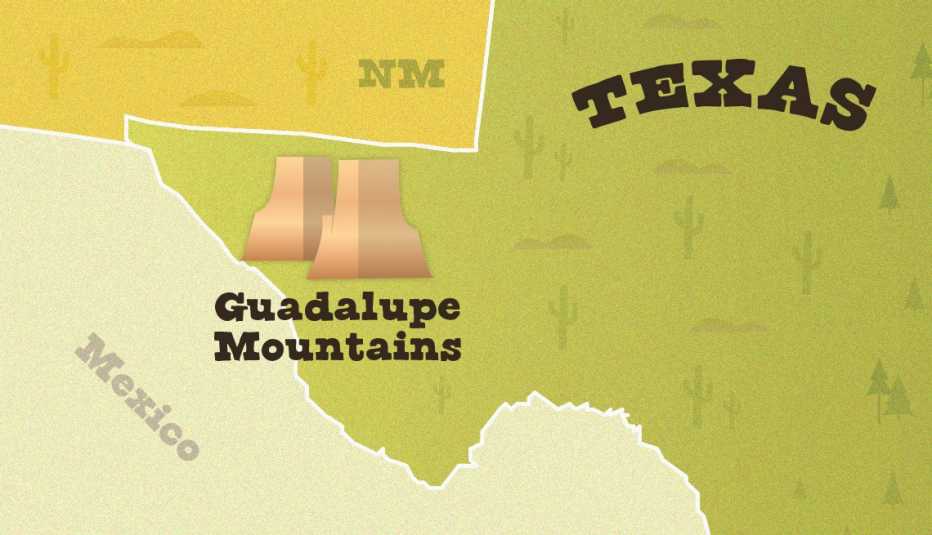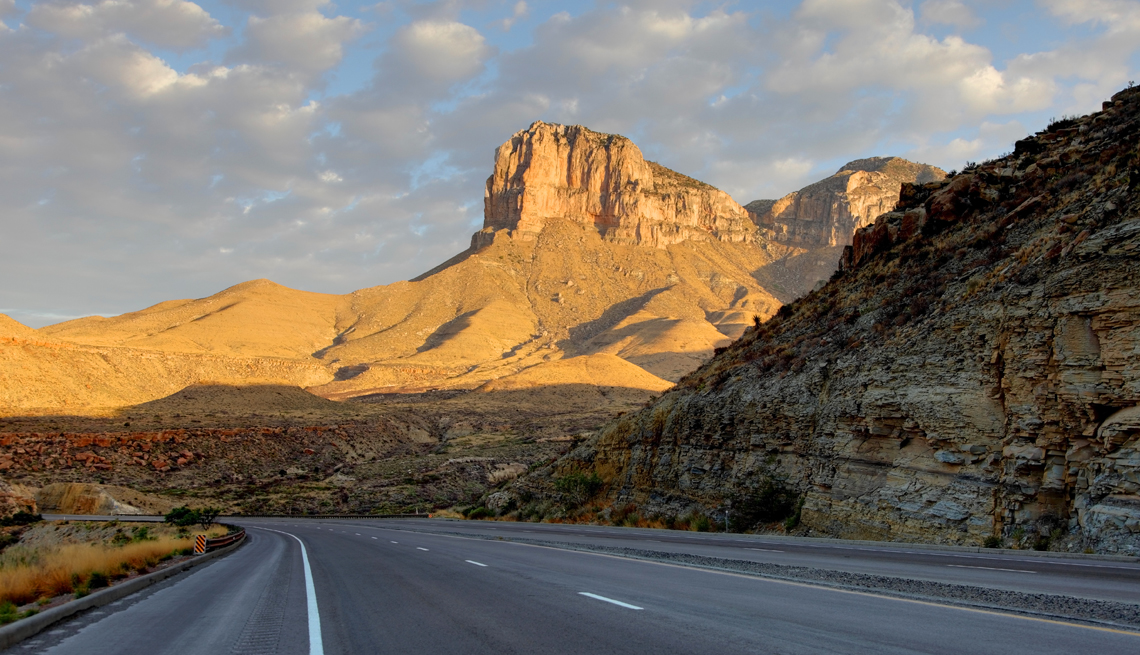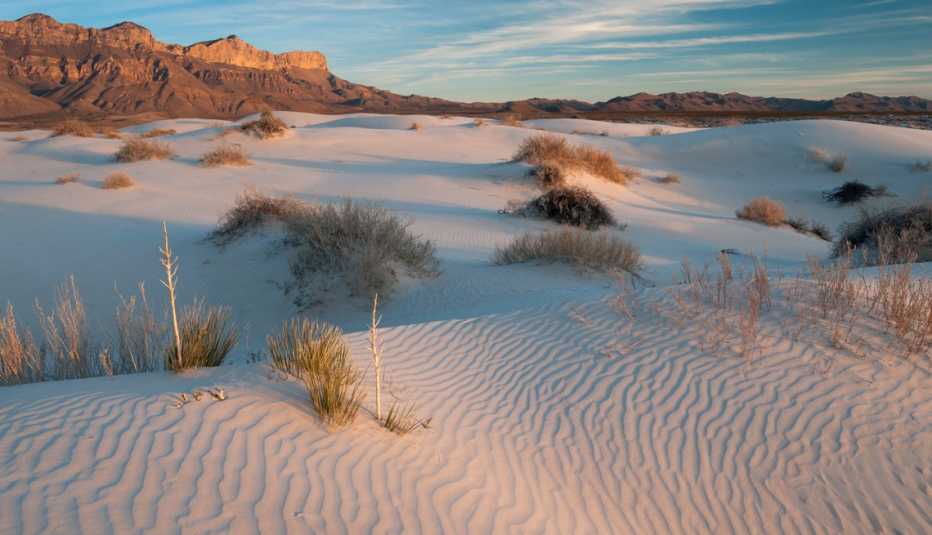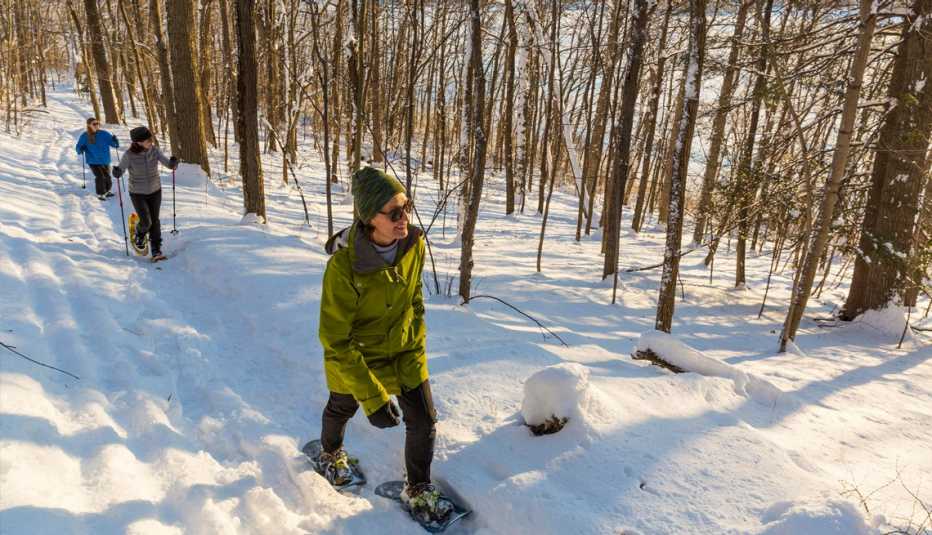AARP Hearing Center
In Far West Texas, in the Chihuahuan Desert, the tallest mountains in the Lone Star State rise like a blocky fortress in stark surroundings at Guadalupe Mountains National Park. The mountains, part of a 400-mile, mostly buried fossilized reef, jut from the desolate scrubland like the jawbone of a giant skeleton. Jagged and imposing, the 3,000-foot peaks are the main attraction of the remote, 86,416-acre park. But once you peel your gaze from the imposing skyline and explore the nooks and crannies of this rugged outpost, an array of other features comes into focus.
Sand dunes from a dry salt lake shimmer like waves on the park’s western side, sheer-walled clefts of rock splice its center and hardwood forests put on a blazing color display each fall in its northern corner. Bobcats, javelinas and mountain lions roam these parts, 16 species of bats live here, and the fragrance of juniper drifts through the air in the high country.
Even with all that, GMNP ranks as one of the country’s least-visited national parks, attracting about 243,000 recreational visits in 2021. Most days, you’re more likely to spot a mule deer than another human once you’ve ventured away from park headquarters.
More than 270 million years ago, the dramatic landscapes began forming when a shallow sea covered the region and a reef formed. The sea eventually evaporated and tectonic forces lifted a section of the fossilized reef upward about 80 million years ago, creating towering peaks.
The stark outline of a 1,000-foot limestone cliff called Capitan, the park’s most iconic feature, has served as a wayfaring point for humans who lived and explored this rugged country for centuries. The scenery hasn’t changed much since those days. And at 8,751 feet, Guadalupe Peak looks down on the rest of this vast state.
“The mountains were the last stronghold of the Mescalero Apache in the 1870s and 1880s, and this land is sacred to them,” says Chris Barr, GMNP’s former acting visitor services manager. “White ranchers saw this as a place of opportunity, where you could own land and make a name for yourself.”
Amenities are scarce. A highway skirts the park’s eastern fringes, and a smattering of spur roads lead to trailheads and access points within park boundaries. You won’t find a single restaurant or hotel, but venture into the windswept landscape and you’ll discover rewards as big as the views.


Facts Box
Location: Far West Texas
Acreage: 86,416
Highest peak: Guadalupe Peak, 8,751 feet
Lowest point: Salt Basin Dunes, 3,640 feet
Miles of trails: More than 80
Main attractions: Hiking and leaf-peeping
Entry fee: $10 per person 16 or older for a seven-day pass (with a senior pass, free entry for up to three adults)
Best way to see it: Hiking the trails
Best time to visit: Fall, when temperatures are mild and the leaves in McKittrick Canyon change color; and spring, before the heat kicks in
Plan Your Trip
GMNP lies just south of the New Mexico-Texas border, about 32 miles southwest of Carlsbad Caverns National Park. You can fly into El Paso (103 miles west of the park) or Midland-Odessa (about 180 miles east), then make the drive to this remote park.
You’ll find GMNP’s main headquarters on the park’s east side at the Pine Springs Visitor Center. Here you can pay fees, chat with rangers, and shop for books, maps and travel guides. A second visitor center at McKittrick Canyon, on the park’s northeastern side, is staffed during peak times, including April, when students go on spring break, and late October and early November, when the leaves change color and the park sees a bump in visitors.
From the park’s low point at the Salt Basin Dunes to its high point at Guadalupe Peak, weather conditions can vary substantially. In summer, for example, temperatures range from the 60s to 90s; in winter, the 30s to 50s. In spring and fall, they typically hover in the 60s and 70s, usually making for perfect hiking conditions. Plants bloom and wildlife is active in the spring, and fall foliage starts its show from mid-October to early November. But brace for winds, which can whip up to 70 mph, and occasional light snowfalls in winter and early spring.
“Every time of year is a different experience here,” Barr says. “In summer you have the place to yourself, but it’s hot. Anybody hiking needs to carry at least a gallon of water per person. And summer is monsoon season, so we get thunderstorms in the afternoons. The last place you want to be is the Top of Texas (Guadalupe Peak) in a lightning storm.”





































































